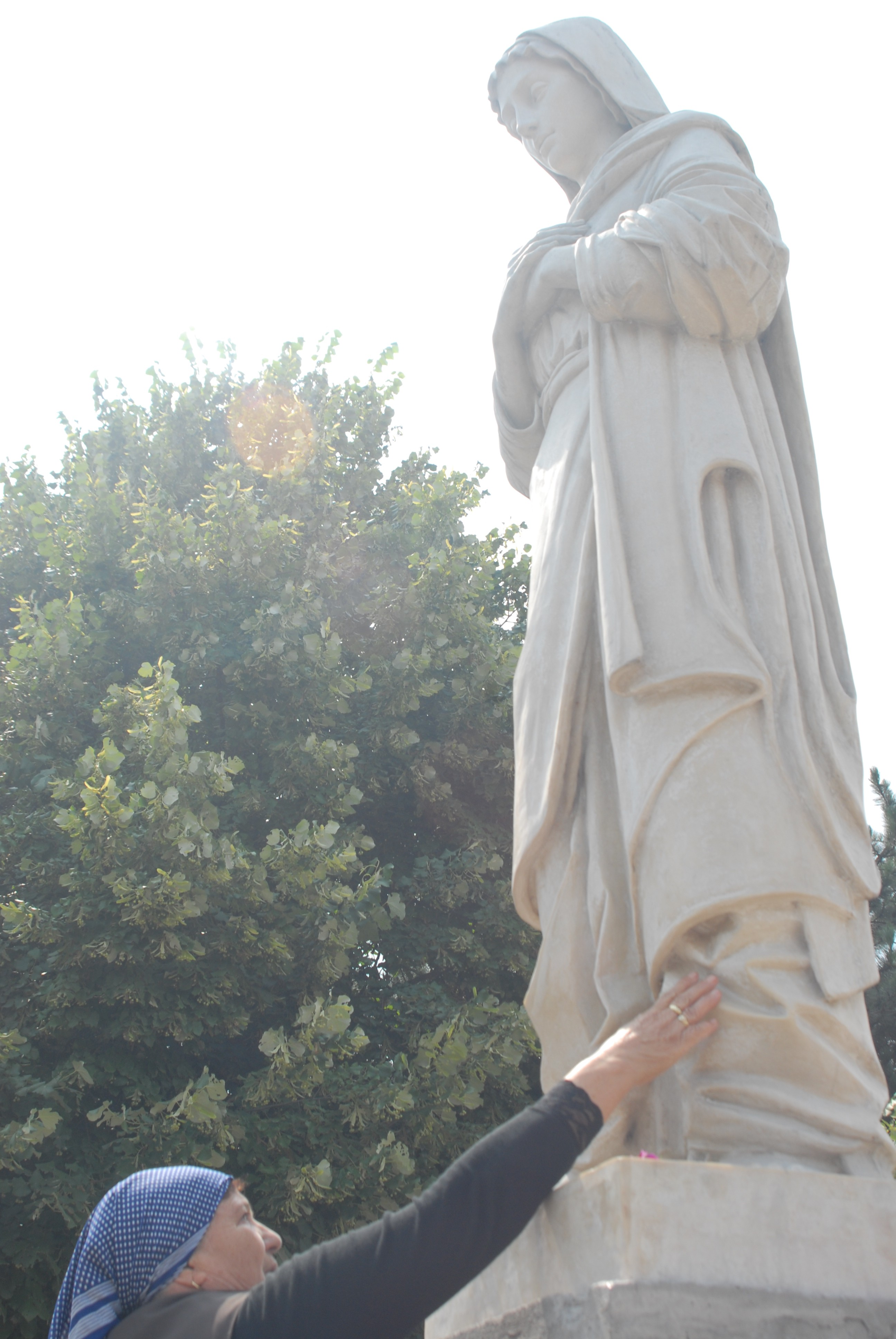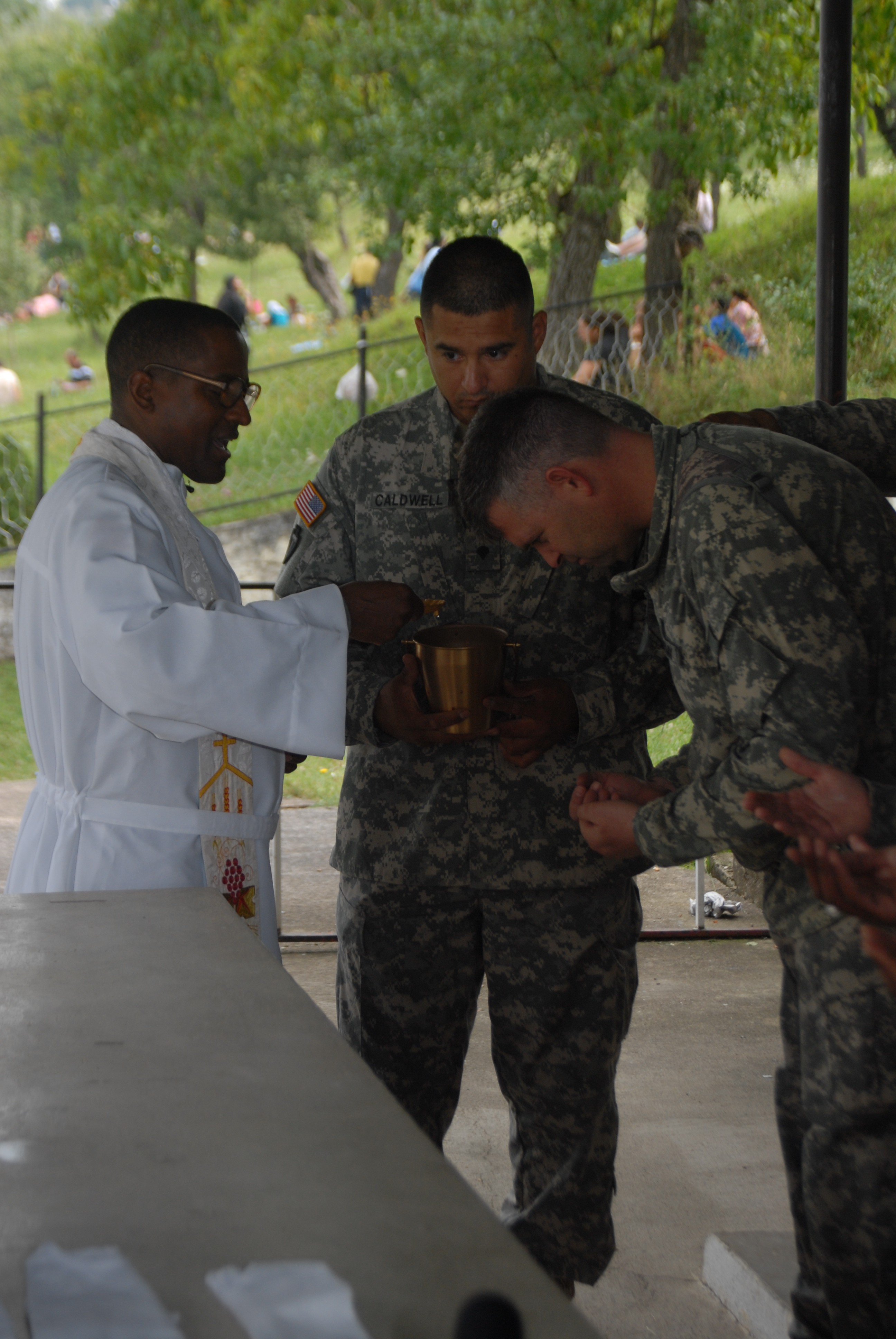CAMP BONDSTEEL, Kosovo -The village of Letnica/Letnice is a beautiful sight to see. Once a year, this quiet and unassuming little village, nestled into the Karadak hills of Kosovo gets transformed into a bustling community where Roman Catholic pilgrims come to worship and pray. For two days out of the month of August Letnica becomes the destination of choice for the thousands of pilgrims who come to celebrate the Feast of the Day of Assumption.
Aug. 15 marks the Day of Assumption and is an important day for Roman Catholics all over the world. It is a holiday that marks the time where Catholics believe the Virgin Mary was taken up both body and soul into heaven, and is a holy day of obligation for Catholics across the world.
The Day of Assumption is now a public holiday in many countries, including Belgium, France, Spain, Greece, and Chile.
There is only one destination in Letnica for the roughly 3,000 Serbian, Albanian, and Croatian pilgrims, a very historic landmark called the Church of the Black Madonna.
Alongside the Balkan pilgrims, over a 1000 Kosovo Force soldiers yearly make the journey to picturesque little village to see the Black Madonna, and for three California National Guard Soldiers this trip was more than just an excursion to see the sights of Kosovo, but a journey to a higher calling.
In the early afternoon in a grotto behind the church that's white shining walls seem to sparkle in the sun Chaplain Honecimo Figueroa with the Task Force Falcon unit Ministry Team baptized Staff Sgt. LaDon Moses, Chief Warrant Officer 2 Eddie Mcdevitt, and Lt. Col. Michael S. Piazzoni into the Catholic Church.
"Being baptized at the Church of the Black Madonna was a great experience," said Piazzoni, who is a 36A finance officer with the California Army National Guard. "My wife and children are all Catholic so now when I come home after the mission I can join my family."
Piazzoni, McDevitt, and Moses' journey to the Black Madonna started long before the morning of Aug. 15 when they made their trek through the pristine Kosovo hills to the church. The three Soldiers have been going through a Catholic initiation process since Easter.
Whether you are a devout Catholic or have just entered the church like Piazzoni, McDevitt, and Moses, the Church of the Black Madonna seems to bring something new out of people.
Maybe it's the twin-peaked towers, or the ornately carved granite statue of Mary outside the church, but something seems to inspire worship to its visitors. After all, it is widely believed by the locals that the church is where the Mother Teresa of Calcutta first received her calling to faith.
"Being at the church where Mother Teresa decided to be a nun is very uplifting," said Piazzoni.
Now known as the Blessed Mother Teresa since the Vatican Beatified her, (the second to last step to sainthood,) on Oct. 19, 2003, Mother Teresa is a point of pride for many of the people of Kosovo. With her Albanian and local roots Mother Teresa is included in the prayers of the pilgrims celebrating the Feast of the Day of Assumption.
With a reputation for divine inspiration that includes the Blessed Mother Teresa herself, one would think that the church would have enough religious attractions to bring the pilgrims but the Church of the Black Madonna has something else that draws in worshipers year after year.
"I think for those who have never experienced a large religious pilgrimage people will take home a deeper sense of faith," said Sergeant 1st Class Anthony R. Greco, a 56M Chaplain's Assistant and Task Force Falcon Non-Commissioned Officer in Charge of the Ministry teams on Camp Bondsteel. "I think when people see such strong faith they will take that faith back home with them and say 'you know what I can be a lot stronger in my faith.'"
For the nearly 3,000 believers that travel to the Black Madonna every year, many of them come not only to celebrate the Day of Assumption, but to see the statue that the church takes its name from.
The other attraction to the church is a 300-year-old Black Madonna statue called the mother of God. Although there are many Black Madonnas throughout the world, religious scholars are hard pressed to determine why the statues are dark, and many faithful believe them to be special or sacred.
"There's over 187 Black Madonnas, another name for the Blessed Virgin Mary, throughout Europe," said.Greco.
There are many legends surrounding the Black Madonna statues, and the Madonna in Letnica is no different.
"There are legends that miracles have occurred here and that the statue has wept blood before," said Greco.
In fact, many locals have claimed that the statue in Letnica has miraculously cured some ailment while others believe that the statue has helped them conceive their children.
These local legends go back a long time, which isn't surprising since the original church was built in the 14th century.
It can be agreed on by anyone who takes one look at the worshipers at the Black Madonna that cultural differences are forgotten as the various cultures that compromise this area of the Balkans drop their differences and lift up their hearts in prayer.
Combining peoples and cultures seems to be a major effect of the celebration. Albanians, Serbians, Croatians, and citizens of the various KFOR countries all come together to worship and praise.
"We have created and environment where people can come together and worship safely. It really warms my heart to see Soldiers from different countries here and know that they are our brothers," said Greco.
"Regardless to what country you come from when you see all the nations here you know it is something bigger," said Piazzoni. "In the Army you work on your physical health but coming here gives you a chance to work on your spiritual health."
The day was filled with prayer and reflection. There was a procession with the darkened statue going through the teeming crowd, and every person who came there with troubles left with a lighter heart. For many it was a moving experience, and for three Camp Bondsteel Soldiers it was also a new beginning.








Social Sharing